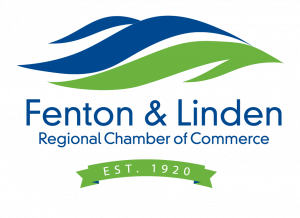Turning Tough Business Choices into Growth Opportunities
Elevate your business by joining the award-winning Fenton & Linden Regional Chamber of Commerce, the principal voice for businesses in Genesee, Livingston, and Oakland Counties.
Navigating the labyrinth of tough business decisions often feels like walking a tightrope without a safety net. However, these moments of uncertainty can be the catalysts for remarkable growth and innovation. By embracing challenges and reimagining them as opportunities, businesses can not only survive but thrive in the ever-evolving marketplace. This article delves into strategies for transforming difficult choices into powerful engines of progress, ensuring that each decision propels your enterprise toward greater success.
Reevaluate Strategies with a Fresh SWOT Analysis
When facing difficult decisions, conducting a SWOT analysis is a crucial first step. By assessing your strengths, weaknesses, opportunities, and threats, you can gain a clear understanding of your current situation. This comprehensive insight helps guide critical decisions, such as budget cuts or strategic pivots. Engaging key stakeholders and using accurate data ensures your analysis is both reliable and actionable. Regular updates to your SWOT analysis help you stay adaptable in a fluctuating market, ultimately translating these insights into actionable strategies that enhance your business’s resilience and growth potential.
Cut Costs Without Compromising Quality
To manage your budget efficiently, it’s essential to identify areas where expenses can be trimmed without compromising core functions. Start by reviewing your operations to spot inefficiencies. For example, negotiating better pricing with suppliers or outsourcing non-core functions can lead to significant savings. Leveraging technology, such as enterprise resource planning systems, can also optimize costs by improving inventory management and procurement processes. These measures help maintain quality and performance while securing sustainable financial success.
Be Ready with a Crisis Management Plan
Creating a robust crisis management plan is essential for turning challenges into growth opportunities. Start by identifying potential risks and vulnerabilities within your business, and develop detailed response strategies for each scenario. Ensure that communication channels are clear and accessible, allowing for swift and effective dissemination of information. Regularly train and update your team on these protocols to maintain readiness. A well-prepared crisis management plan not only mitigates damage but also instills confidence and resilience, positioning your business to emerge stronger from any setback.
Refocus on Profitable Products and Customers
Enhancing profitability often requires reassessing your product lines and customer segments. Focus on core offerings and eliminate slow-moving products to reduce unit costs and allocate resources more effectively. Conduct annual profitability analyses for each SKU to ensure your efforts support your most profitable products. Use insights from customer profitability analysis to refine marketing strategies and optimize product development, aligning with your most valuable customer segments.
Embrace Lean Management for Greater Efficiency
Adopting lean management principles can significantly reduce waste and maximize resource utilization. Lean focuses on eliminating non-value-added activities, streamlining processes, and improving efficiency. By minimizing excess motion and unnecessary transport, you can reduce handling and waiting times. Effective implementation of lean strategies leads to substantial cost savings and higher productivity levels. This approach not only enhances operational efficiency but also improves product quality and customer satisfaction, positioning your business for long-term success.
Automate Processes for Efficiency and Savings
Investing in technology and automation can streamline your business processes and reduce labor costs. By 2026, the automation market is projected to grow significantly. Automation tools can take over repetitive tasks, allowing your team to focus on strategic activities, enhancing overall productivity. This shift lowers hiring and training costs while ensuring operational efficiency and improved accuracy. Adopting low-code and no-code platforms can further accelerate process automation without extensive programming knowledge.
Freelancers are a Cost-Effective Workforce Solution
Hiring freelancers instead of full-time employees can be a highly effective way to save on costs such as benefits, office space, and long-term commitments. For any contractor you hire, you’ll need W-9 documents from the IRS for tax purposes. Contract workers can sign a W-9 with an electronic signature and send it back digitally, saving time for both parties involved. This streamlined process, combined with the cost savings, makes freelancers a valuable asset for businesses looking to optimize their expenses.
Steering your business through turbulent times requires not just courage but a strategic mindset focused on resilience and adaptability. Remember, the path to long-term success is often paved with tough choices, but with the right strategies, you can navigate these obstacles and emerge stronger. As you implement these insights, you’ll not only safeguard your business’s future but also position it to thrive in an ever-changing marketplace.

